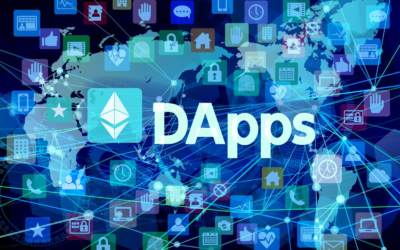As the name suggests, decentralized autonomous organizations(DAOs) are a novel form of management structure implemented via blockchain technology(automation), consisting of member-owned communities(decentralization), in contrast to centralized leadership. A community-led organisation that is not governed by a central authority. It is completely autonomous and transparent: smart contracts establish the foundational rules, carry out the decisions reached by consensus, and at any point, proposals, voting, and even the code itself can be publicly audited by anyone with access to the internet. At the end of the day, a DAO is entirely governed by its individual members, who work together to make critical decisions about the project’s future, such as technical upgrades and treasury allocations. More people will use a healthy, robust protocol, which will in turn increase the value of the tokens that each DAO member has in their possession. As a result, as the protocol achieves success, so do the token holders.
Source: https://ethereum.org/en/dao/
TechCrunch described DAOs as “a paradigm shift in the very idea of economic organization… offers complete transparency, total shareholder control, unprecedented flexibility, and uses DAO to automate governance.” Essentially, a DAO is akin to a digital business operated through a smart contract. This smart contract encodes financial transactions and the division of responsibilities and executive authority amongst DAO members, creating fully democratized and transparent governance over treasury funds, versus hierarchical decision-making and power structure.
The DAO was launched in 2016 as a crowdfunding campaign via token sales.The objective of the DAO was to remain decentralized, that is, remain unaffiliated with any state controlled authority to eliminate any human manipulation or error. This would provide a new business model to commercial and non profit enterprises. It exists as a contract on the Ethereum blockchain with no physical address. Because it was a blockchain enabled organization, it claims to be an entirely transparent organization where everything was done with code and was visible to everyone. TechCrunch in 2016, described The DAO as “a paradigm shift in the very idea of economic organization. … It offers complete transparency, total shareholder control, unprecedented flexibility, and autonomous governance.” DAO’s are essentially democratized, meaning, it requires the vote of the members to implement changes. Some of the prominent features are:
- Transparent and democratized.
- All handling is done in a decentralized manner.
- Before any decision, all votes are tallied.
- All activity remains fully public.
DAO memberships are of two types; share based and token based. In the share based memberships DAOs are usually more permissioned. Share represents ownership and voting power and members can exit anytime with their proportions in the treasury. In token based membership, trading can be done permissionless on the exchange. Simply holding the token also grants access to voting. The lack of a central authority opens new avenues of global cooperation and coordination. Furthermore, DAOs eliminate the need for trust in other members, who may be unbeknownst to each other, given rules are entirely transparent and verifiable in a given DAO’s smart contract that can only be altered via vote. The use of smart contracts also enables automated execution of payments or investment decisions, allowing for swift collective action and resource mobilization. DAOs also make organizational activities fully accessible to the public, unlike typical businesses whose activities are typically private, leaving them more susceptible to human error, manipulation, or unethical behavior.
Some of the popular DAO coins are:
Uniswap (UNI)
Apecoin (APE)
Maker (MKR)
Dash (DASH)
Compound (COMP)
The envisioned appeal and function of DAOs were to create a crypto venture capital fund at reduced cost and increased control for shareholders. The first DAO, known as “Genesis DAO,” was a crowdfunding campaign launched in 2016 deployed on the Ethereum blockchain. Anyone was able to gain access by purchasing DAO tokens with ether, resulting in the largest crowdfund ever, garnering $150 million. Like a VC, members could pitch potential investment projects to be funded by the DAO treasury upon passing a vote. Voting rights were granted via the DAO tokens, entitling members to a share of the potential revenue generated by a given venture. Unfortunately, a hacker exploited a vulnerability in the DAO’s code, resulting in the loss of $70m. The DAO was able to resolve this issue via a hard fork of its code, but the damage to DAOs reputations was already done, as hard forking the code undermined the original ethos of using smart contracts, and later led to a crippling SEC ruling.
Despite the damage done, the failures of the Genesis DAO inspired enhanced coding and startups devising ways to avoid SEC regulation. The potential of DAOs remained intact, providing an innovative business model to commercial and non-profit enterprises and in 2021, Wyoming approved the first legally recognized DAO. In view of the ongoing Russia-Ukraine conflict, PussyRiot has teamed up with PleaserDAO and Trippy Labs to create UkraineDAO which will sell NFTs and the sales made through this will be donated to foundations working for relief.










